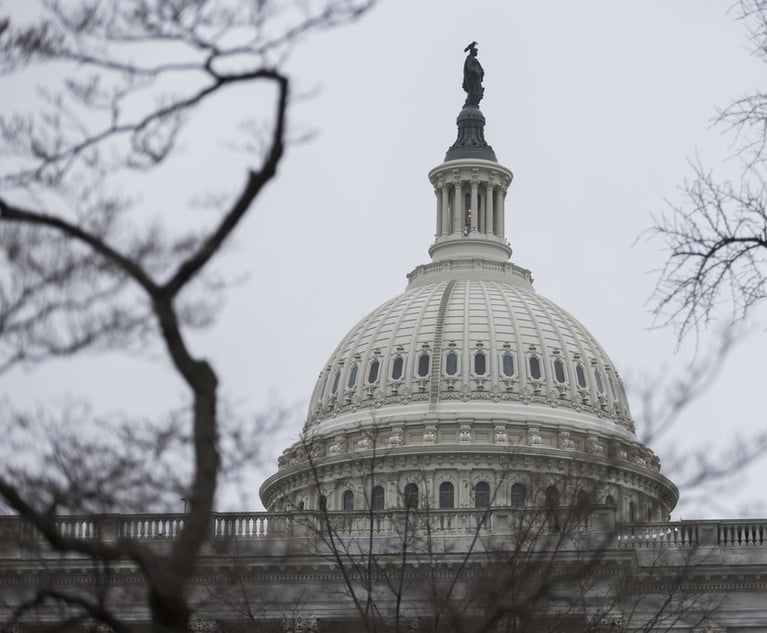Having crossed the finish line for its much-publicized five-year growth strategy at the start of this year, White & Case partners from across the firm could finally breathe a sigh of relief they’d been holding in since 2016.
With global revenues at the firm hitting $2.39 billion in 2020, profits per equity partner surpassing $3 million, and revenue per lawyer hitting $1 million, the firm’s major internal strategic milestones had been achieved.
External targets to boost global lawyer head count, particularly in the New York and London powerhouse offices, had also been largely successful, with the firm now housing over 2,200 lawyers worldwide—a nearly 18% increase on 2016’s figure. In a March statement, White & Case said it had grown its New York head count to more than 500, while the London partnership had grown by a third in that span, reaching 122 partners.
But according to many former and current White & Case partners, the process of getting to this point has been both a blessing and a curse.
The firm’s long-standing chairman, Hugh Verrier, said in the March statement that the strategy had given the firm “newfound confidence that we can achieve ambitious goals.”
As such, partners say the firm almost immediately turned its attention to its next strategy, expected to be a three-year plan that aims to make White & Case a real competitor to the likes of Big Law behemoths Kirkland & Ellis and Latham & Watkins.
But several people now and previously at the firm, who requested anonymity to speak on matters the firm itself has declined to comment on for this story, say White & Case faced a series of challenges in its quest to become more profitable that have raised questions about the path it took to get there.
Reports of integration challenges, a siloed partnership full of sharp elbows, and a raft of exits all point to significant issues within the firm that some believe may undercut any plans for further growth. If cracks are beginning to show already, some partners wonder, how can the firm adequately prepare for the future?
One White & Case partner puts it more bluntly: “How much further can we go as a firm before we stray into Icarus territory?”
Sharp Elbows and Aggressive Goals
The key to the firm’s financial success over the past five years, both former and current partners say, largely lies in the clarity of its vision and its confidence that it would achieve its goals. Some partners note the boldness of announcing them so publicly.
“The firm really took a chance by doing that,” a former London-based lawyer says. “When the decision was made to run a five-year strategy, there was of course no pandemic on the horizon—there wasn’t even Brexit to consider.”
 White & Case chair Hugh Verrier
White & Case chair Hugh Verrier
According to one former business professional in the firm’s New York office, Verrier made the decision to “hold partners’ feet to the fire,” impressing upon lawyers the importance of hitting the firm’s targets—$1 million in RPL, $2 billion in revenue and $3 million in PEP—lest the firm take flak for falling short. Doing so would require partners to generate big-ticket work to attract the high-profile hires so crucial to its growth.
Partners at the firm maintain that without the strategy, the firm would have been unlikely to hit such lofty financial heights.
“We may have done well, but without a clear line of sight on what management expected of the firm, I doubt we’d have hit $3 billion,” says one partner on the firm’s London corporate team.
Others say management’s ambition is simply a reflection of the competitive, or even aggressive, nature of the firm’s partnership. Top-earning partners would often pick fights over small perceived sleights, they say. A former London-based partner says the firm is home to some “inflated egos,” with a handful of partners calling the shots and everyone else feeling the need to fall in line.
“The weighting of anyone’s influence within the firm is entirely dependent on their billings,” the former partner says. “There is no point in making your concerns known if you are a middle-of-the-road partner. If you’re going to say to the big dogs, ‘Look, I think this is wrong and we should do it like this,’ all that will happen is that you’ll get sneering looks and derision, and you’re sticking your neck out for no possible upside.”
A main contribution to this attitude, partners say, is the firm’s annual performance review process, in which partners’ equity weighting is analyzed and often altered each year.
“It means you’re always looking over your shoulder at what everyone else is doing, and everyone else knows how much money you’re bringing in,” the former London partner says.
One New York-based partner says much of the in-fighting within the partnership is owed to the “scrappy nature” of the firm, and in his experience it was treated as a “badge of honor for caring about clients.” But that feeling isn’t universal.
“Unfortunately, that didn’t always translate well to the associates trying to stay out of the big characters’ way,” another former London partner says.
As White & Case basks in the success of delivering on its 2020 strategy, not everyone at the firm is sharing equally in the spoils. As the New York business professional says, the firm made it to this point despite “all of the speedbumps and the perceived cultural issues.” But frustrations further down the food chain suggest some of the costs of the effort.
“All of that feeds into the wider idea of whether the firm’s goal was to grow profits at any cost,” the business professional says. “The partners at the top of the chain, those guys are all looking at things like everything’s fine. Their stance seemed to be, ‘Why are people complaining? The firm is making lots of money.’”
Costly Concerns About Culture
With a raft of laterals joining the firm in the early days of its five-year plan, White & Case’s hiring spree was off to a solid start. Even well into 2018, the firm was bringing on significant numbers of partners. Seven joined the London office in the first eight months of 2018, for example.
The firm took to the market with a message that it was serious about hiring top talent, says one former partner who was based in one of the firm’s continental Europe offices. It helped the firm stand out and offered leaders their pick of applicants to choose from. But the decisions sometimes seemed rushed.
“Some hires were, in my view, made too rashly,” the partner says. “I think at the beginning of the strategy, we were keen to get the ball rolling and brought on perhaps too many people.”
By early 2019 the firm had realized it was at a crucial juncture in its strategy, having hired so many people that attention was now turning to integration, according to several partners at the firm, including senior management members.
Integration challenges really came to a head in 2019, when a series of internal issues were raised with the firm in London. Four partners from the office had disagreements with the firm’s management teams, with sources citing unhappiness with the firm’s culture as key reasons for the partners’ eventual departure at the start of 2020.
Some of the firm’s hires were successful, others less so. As one London-based partner at a rival firm says, “That’s the nature of law firm hiring.”
“But it did feel more symbolic when certain hires, made as part of the 2020 vision, were clearly not a good fit for the firm,” the partner says. “There were times when I wondered whether we were growing just for the sake of it.”
Some partners felt certain hires didn’t make sense, the business professional in New York says, and underperformers stuck around longer than they should have.
“The inevitable question that came out of that was: Did you keep these people around just to help reach that head count target?” the business professional says.
Others suggest that the firm is being more thoughtful about its growth this time around, taking into account the importance of integration and culture. Some in the London office cite lessons learned from the office’s dip in turnover for the 2019 financial year, when revenues dropped by 3.7%. Speaking to Law.com in 2020, London managing partner Melissa Butler attributed the drop to the “general political and economic turmoil resulting in a decline in M&A and IPO volumes” seen in the market in 2019—two areas in which the firm had heavily invested, including with lateral hires. Butler also noted, however, that “London revenues were actually up 20% compared to five years ago,” highlighting that the firm was “still on the correct trajectory.”
In 2020, revenues for the whole firm bounced back, allowing it to surpass its targets, despite any moments of doubt. This, according to a London-based corporate partner, can be attributed to the strong bench of mergers and acquisitions lawyers the firm built up in recent years.
While White & Case is not the only firm to have benefited from the recent glut of M&A activity, partners say that the firm’s previous positioning served it well in a time of crisis, just ahead of reaching the strategy’s finish line.
Tony Williams, principal of U.K.-based legal management consultancy Jomati Consultants and former global managing partner of Clifford Chance, says White & Case’s decision to strengthen its transactional capabilities was a game changer for the firm.
Indeed, during the first quarter of 2021 the firm took pole position in global M&A rankings, according to data from Mergermarket, which put the firm ahead of key rivals including Kirkland and Skadden, Arps, Slate, Meagher & Flom.
“If you go back 10 or 20 years, [White & Case] wasn’t seen as that type of firm at all,” Williams says. “They had a global platform but it was not terribly joined up, and it was more focused on project finance. So they’ve done a very impressive job in achieving their strategy.
“Have there been issues on getting there? Yes. Have a number of people’s noses been put out of shape? Definitely. But unfortunately you can’t make an omelet without cracking some eggs,” Williams continues.
A decade ago, he says, the firm had great potential but hadn’t yet acted on it. That was the challenge Verrier set for his colleagues. Given the difficulty of reaching the firm’s targets, Williams says, “I take my hat off to them.”
The Next Steps
As for the firm’s size, does it really matter this time around? Current and former partners are split on whether further pushes on head count are really what the firm needs going forward. Some acknowledge that bringing in new talent, especially partners with critical new relationships, is necessary to bolster the firm’s spending power.
“The firm has reached critical mass on promotions, so the preferred route is to promote from within rather than hire,” says one former London partner. “I personally think that it is a healthier, more mature business that does that. There’s also been mention of there being a ‘London vision,’ which will include culture in some form. Will it make any difference? Not if it’s just all talk.”
Many others, however, question how large White & Case can get under its current model, where everything is centrally managed out of New York.
“A firm of 2,400 lawyers isn’t massive to manage out of one base—other firms do it. But how long before the offices become a little unwieldy?” the New York business professional says. “After all, there are some cracks appearing already.”
As for the firm’s chairman, Verrier, the next strategy will be significant in other ways. Reportedly unable to carry on in the role past 2023 due to the firm’s management age restrictions, numerous partners say he could well stand down as chairman midway through the new strategic plan.
As the New York business professional asks: “To what degree is Hugh making decisions today as part of his thinking about what will happen when he’s no longer the chair? Will culture or technology come more to the fore?”
Having taken up the chairman role in 2007, Verrier has steered the firm through the two largest crises in the legal industry in recent memory—the 2008 economic crash and, more recently, a global pandemic.
“The success of this strategy has been a vindication of all [Verrier’s] done throughout his time as chairman,” Williams says.
Whether Verrier will now set new goals for the firm that he won’t be around to see come to fruition is a pressing question for the White & Case management team, and one it has declined to discuss for now.
“Whatever the answer,” a former London partner says, “now is the time to show that they care about it.”
NOT FOR REPRINT
© 2024 ALM Global, LLC, All Rights Reserved. Request academic re-use from www.copyright.com. All other uses, submit a request to [email protected]. For more information visit Asset & Logo Licensing.


 Animation by Hyeon Jin Kim/ALM
Animation by Hyeon Jin Kim/ALM







